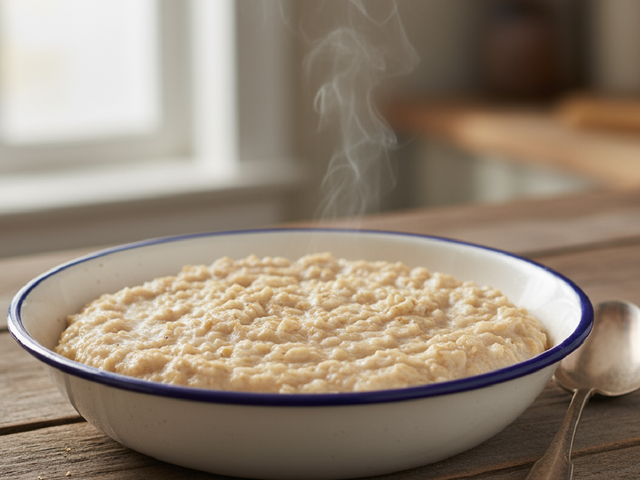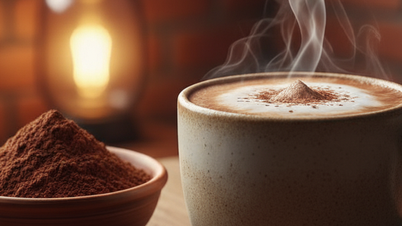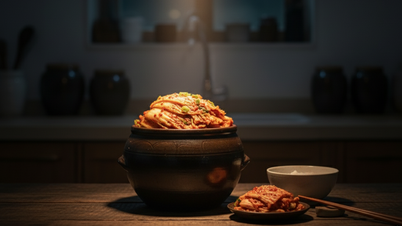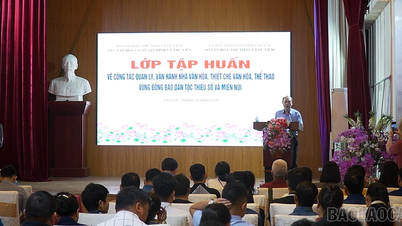To reduce blood fat and control blood pressure, people can eat the following whole grains.
Oatmeal
Oats are one of the most studied whole grains due to their ability to effectively reduce cholesterol. Many studies have shown that eating oats regularly has a better effect on reducing total cholesterol than a normal diet, according to the website Eating Well (USA).

Oats have the ability to reduce cholesterol
PHOTO: AI
Oats contain beta-glucan, a highly viscous form of soluble fiber that helps reduce cholesterol absorption from the intestines and increases cholesterol removal through bile. In addition, oats also maintain stable blood sugar and can improve insulin sensitivity, thereby reducing the load on the vascular system and blood pressure. Instead of eating a breakfast with a lot of sugar and starch, people should replace it with rolled or crushed oats with fruit and nuts.
Whole wheat barley
Whole barley is also an effective choice for blood pressure and blood lipid control. In fact, whole barley can help reduce both systolic and diastolic blood pressure in people with slightly high blood lipids.
A study published on the medical research site ScienceDirect found that people who ate barley regularly had significantly lower total cholesterol and “bad” LDL cholesterol. The effect was even better than some whole grains such as brown rice or whole wheat.
Whole barley contains both soluble and insoluble fiber, which helps improve vascular endothelial function. Additionally, its relatively high magnesium and potassium content also helps regulate blood pressure.
Wholegrain barley cooks like rice but requires more water and a slightly longer cooking time. Wholegrain barley can replace 1-2 servings of rice per day.
Brown rice
Unlike white rice, brown rice retains its bran and germ layers. Therefore, brown rice is richer in fiber, minerals and biological compounds than white rice.
With the bran layer still retained, brown rice provides fiber, magnesium, potassium, and helps control post-meal blood sugar spikes. When blood sugar and insulin are well controlled, adverse effects on blood vessels and blood pressure are also reduced. In addition, replacing white rice with brown rice also increases the feeling of fullness.
Experts recommend having at least a few meals a week with brown rice instead of white rice. When cooking, you can combine it with green vegetables and vegetable protein sources such as beans and mushrooms to increase nutritional efficiency.
Buckwheat
Buckwheat is not a true whole grain, but a pseudocereal, which means it is used in a similar way to a whole grain. A study in the journal Nutrition Research found that regular consumption of buckwheat reduced total cholesterol, triglycerides, and blood pressure in patients with metabolic syndrome.
This benefit is due to buckwheat being rich in rutin, a powerful antioxidant. Rutin strengthens blood vessel walls and inhibits enzymes that constrict blood vessels. This helps dilate blood vessels and lower blood pressure. Buckwheat flour is often used to make noodles, porridge, or mixed rice. Whole buckwheat should be used instead of refined, according to Eating Well .
Source: https://thanhnien.vn/4-loai-ngu-coc-nguyen-hat-giup-giam-mo-mau-va-huet-ap-hieu-qua-185251021135839242.htm




![[Photo] Prime Minister Pham Minh Chinh received Mr. Yamamoto Ichita, Governor of Gunma Province (Japan)](https://vphoto.vietnam.vn/thumb/1200x675/vietnam/resource/IMAGE/2025/10/21/1761032833411_dsc-8867-jpg.webp)
![[Photo] Da Nang residents "hunt for photos" of big waves at the mouth of the Han River](https://vphoto.vietnam.vn/thumb/1200x675/vietnam/resource/IMAGE/2025/10/21/1761043632309_ndo_br_11-jpg.webp)


























![[Photo] Prime Minister Pham Minh Chinh meets with Speaker of the Hungarian National Assembly Kover Laszlo](https://vphoto.vietnam.vn/thumb/1200x675/vietnam/resource/IMAGE/2025/10/20/1760970413415_dsc-8111-jpg.webp)














































































Comment (0)